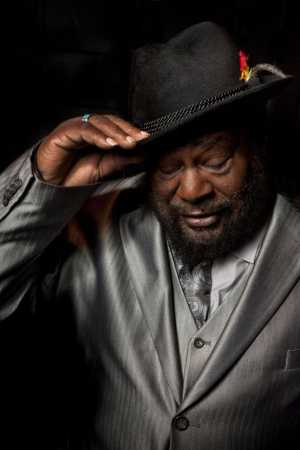| |
Taken from Arizona Daily Sun (Aug 20, 2015)
Mothershipment
by Douglas McDaniel, Arizona Daily Sun

Legendary funk singer-songwriter and music producer George Clinton. Courtesy photo |
George Clinton’s longtime funky UFO stage prop may have found safe harbor, but he’s still on a mission. For years, during the 1970s and 1980s, Clinton, the out-of-this-world mastermind behind Parliament-Funkadelic, featured flamboyant romps powered by a 1,200-pound alien spacecraft capable of soaring over mind-blown crowds at stadium shows. Eventually the prop was left at home for tours, but in 2011 the relic of a bygone era of arena theatrics, the Mothership, became part of the Smithsonian's National Museum of African-American History.
Prior to his appearance with his band at the Orpheum Theater in Flagstaff, Clinton, now 73, was asked about the expense and maintenance of the prop now considered to be an official part of African-American cultural heritage.
“I remember during a European tour, we left it in Germany and it took us six months to get it back,” Clinton says in a recent phone interview with Flag Live. “Now it’s all assembled, cleaned up and in the Smithsonian.”
For the past few years he’s been trying to correct his legacy, fighting to do that the only way he knows how, with constant touring, recording and since last year, book publishing. His considerable impact on all of pop music since the 1970s, the hard breaks of the funk—a word now synonymous with Clinton—inspired a generation of rap, hip-hop and rhythm and blues artists. But the way his sound was incorporated by such performers as Snoop Dog and Dr. Dre, sampled more often than perhaps any other artist of his generation, has led Clinton to pursue an accounting on his legacy. In the past year he has released a new album, First Ya Gotta Shake the Gate (2014), and a biography, Brothas Be, Yo Like George, Ain’t That Funkin’ Kinda Hard on You?, about his struggle to retain his publishing rights.
He’s approaching the struggle without lawyers, he says, who he doesn’t trust, but through this outburst of creativity, which is more of a mission statement.
“The whole thing of the copyright issue, all of the time that became part of the fight, all of the point of the story in the book, all part of the volumes of music—33 songs—all of it was part of a plan to all go together,” he says. “What I want the public to see ... that funk is a world struggle. All of the music samples, samples of samples, the concept of royalties. It’s a personal struggle for the funk.”
There is even an ongoing watchdog-style, eye-jarring website with conspiratorial airs and intrigues, Flashlight2013.com “shining the light on misappropriated copyright for musicians, songwriters and artists.” In addition, there is this online mission statement: “I [George Clinton] want to be known as the man who brought to the attention of America the copyright issues. That’s what I would like my legacy to be, to have turned people on to the fact that they need to fight for their rights to their music. You have to fight a lot of people for your music. You have to fight the copyright companies, like BMI (Broadcast Music, Inc.). You have to fight the record companies because they really want to take it all. Right now, it’s time for people to start getting their music back.”
Hence this struggle is the latest component of “the funk.” If, when Clinton speaks the term, it becomes synonymous with himself, who can blame him? Along with James Brown and Sly and the Family Stone, Clinton courageously and outrageously carved a new direction for the word “funk.” He says the first time he heard the word was on jazz and blues records he’d listened to as a youth. The North Carolina native, who worked at Motown in the late 1960s, had listened to Miles Davis and Jimi Hendrix and decided to launch R&B into the stratosphere.
“We decided to do Motown music with Marshall Amplification,” Clinton says. “It became funkadelic. That became the concept.”
Parliament-Funkadelic, the name going through various transformations over the decades, launched dozens of chart-topping songs, including “Flash Light,” “One Nation Under a Groove” and “Atomic Dog.” Their shows were wild jams including increasingly sophisticated characters on stage, with a great deal of experimental sounds and rhythms based on the near Beach Boys-like purity of the funk, the party, the communal call and response, always asking the audience to join in and dance.
Clinton decided to include the spaceship after seeing prog-rock shows in the early 1970s. The space aesthetic came to mind, of course, the natural way.
“Probably when I saw Pink Floyd,” he says, “plus ‘Tommy’ and Hair, the rock ‘n’ roll show tunes. When you start seeing Pink Floyd, that space theme, we thought, there had to be a rhythm and blues version of that. That’s when the Mothership became. Characters don’t get old, like Mickey Mouse and the dollar bill … Sly and the Family Stone came out doing a pop version of what we were doing. We were doing the Jimi Hendrix version.
"The connection was always we would define ourselves by what we were doing through the music, free our minds for all of us [participating]. We went to all of the spectrum of the people. We were tripping. That is the pure of it. I became re-inspired to write about all of that."
|
|